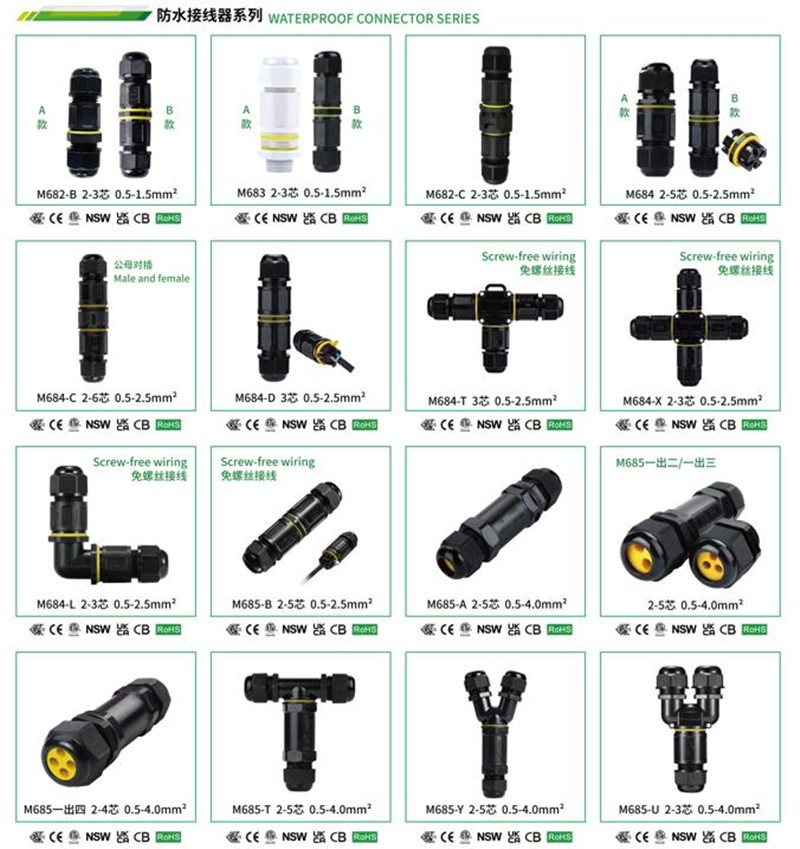Waterproof connectors are the main accessories of electronic lighting components. Waterproof connectors are mainly divided into circular waterproof connectors and square waterproof connectors, which are connected by sealing and locking. The connectors have an additional waterproof ring compared to ordinary connectors, and the waterproof levels are mainly IP67 and IP68. Simply put, they can be used in places with water or humidity: LED street lights, wall washing lights, plant lights, outdoor lighting towers, etc Cruise ships, industrial equipment, sprinklers, and so on all require the use of anti water and electricity connectors. Mainly relying on waterproof sealing and design structure to achieve excellent waterproof performance.
Waterproof connectors have two functions: signal transmission and transmission interworking
In the field of lighting electronic applications, this type of waterproof connector can withstand standard current and voltage on the inner core/terminal of the wiring. In the application field, it is mainly connected to the power supply of lighting electronic equipment through interconnection. This type is mostly used outdoors, considering waterproof performance, fire resistance, flame retardancy, high temperature resistance, aging resistance, mechanical lifespan, etc.
Another type is terminal design that can simultaneously transmit power and signal, and signal transmission can be divided into two categories: simulation signal transmission and digital signal transmission. The required functions of analog or digital signal connectors should mainly be able to protect the integrity of the transmitted voltage pulse signal, which should include the waveform and amplitude of the pulse signal. Data signals differ from simulation signals in terms of pulse frequency, as their pulse transmission speed determines the maximum frequency of the protected pulse. The transmission speed of data pulses is much faster than some typical simulation signals.
